Vinicunca, the Rainbow Mountain of Peru
Intro
Vinicunca is a "rainbow mountain" in the Vilcanota Mountain Range of Peru. The mountain is also known by these other names:
- Winikunka
- Rainbow Mountain
- Cerro Colorado
- Montaña de Siete Colores
- Montaña Arcoíris
The mountain's surface appears colorfully striped due to the presence of various minerals. On a good day, this is what it could look like:
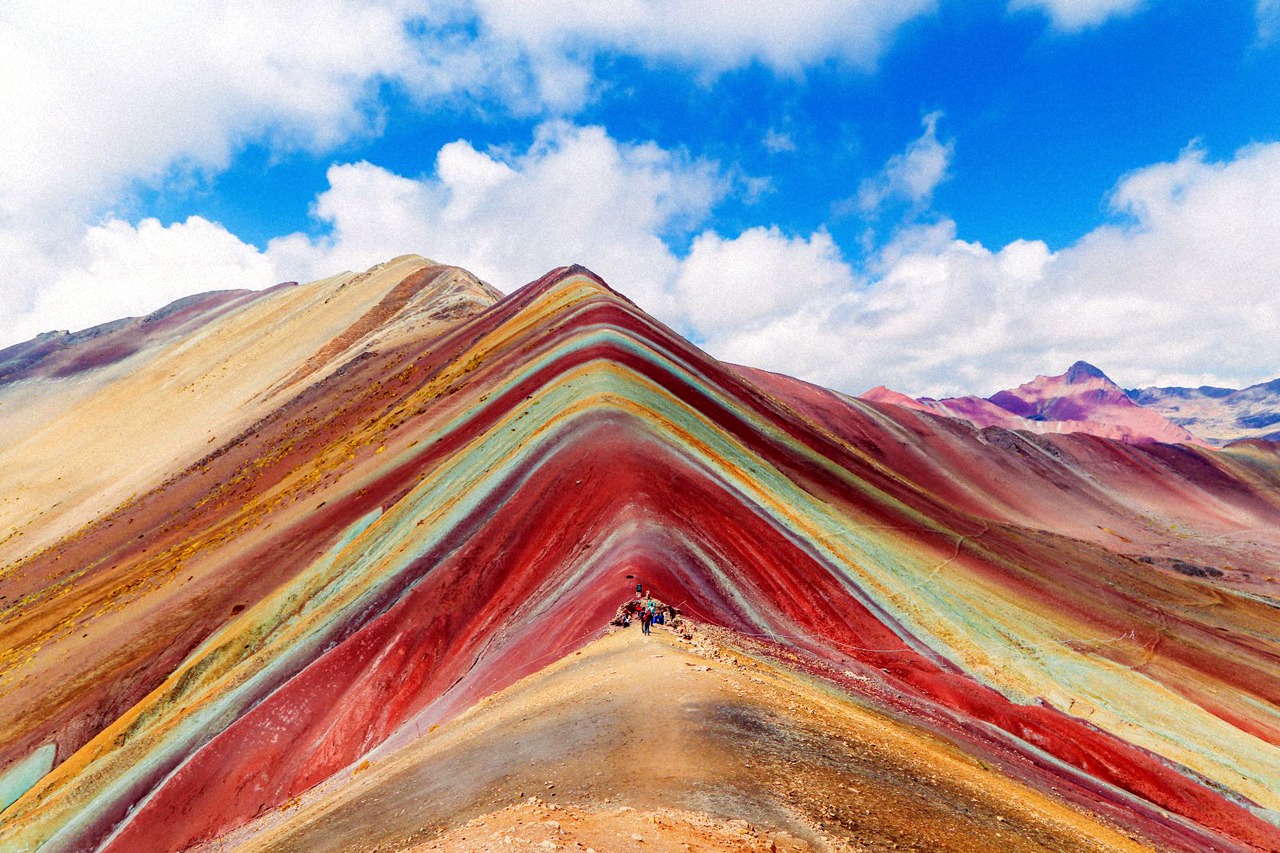
History / Formation
Over time, various minerals were transported by water through the Vilcanota Mountain Range and happened to accumulate here at the site of Vinicunca. Their presence and the colorful shades of the mountain were unknown until recently because they were covered for centuries by glacier caps. In the early 21st century, the glacier caps melted due to the warming of the climate to reveal for the first time the colors of the mountain. The rainbow mountain was discovered in the mid-2010's and has since become a major tourist attraction.
The Minerals and Colors
This Web page from RainbowMountainPeru gives a really nice breakdown of what minerals exhibit which colors: https://www.rainbowmountainperu.com/rainbow-mountain-peru-origins/
- Pink: Mixture of red clay, mudstone, and sand
- White: Sandstone (quartz sand) and limestone
- Purple or lavender: Marlstone (mixture of clay and calcium carbonate and silicates)
- Red: Argillites and clays
- Green: Clays rich in ferromagnesian minerals (mixture of iron and magnesium) and copper oxide
- Yellowish brown, mustard, or golden: Limonites, calcareous sandstones rich in sulfur minerals.
- Earthy brown: Fanglomerates composed of manganese rocks dating back to the quaternary era.
The Web page also explains that the layers have arranged themselves based on the weight of each mineral, that over time tectonic movements have elevated the layered sediments, and that the oxidation of the minerals has resulted in the bright colors that we see.
Driving through the Vilcanota Valley
We took a two-hour bus ride from our hostel in Cusco to Vinicunca. The route goes through the Vilcanota Valley and then up a windy road along a mountainside until you arrive at the base camp of Vinicunca.
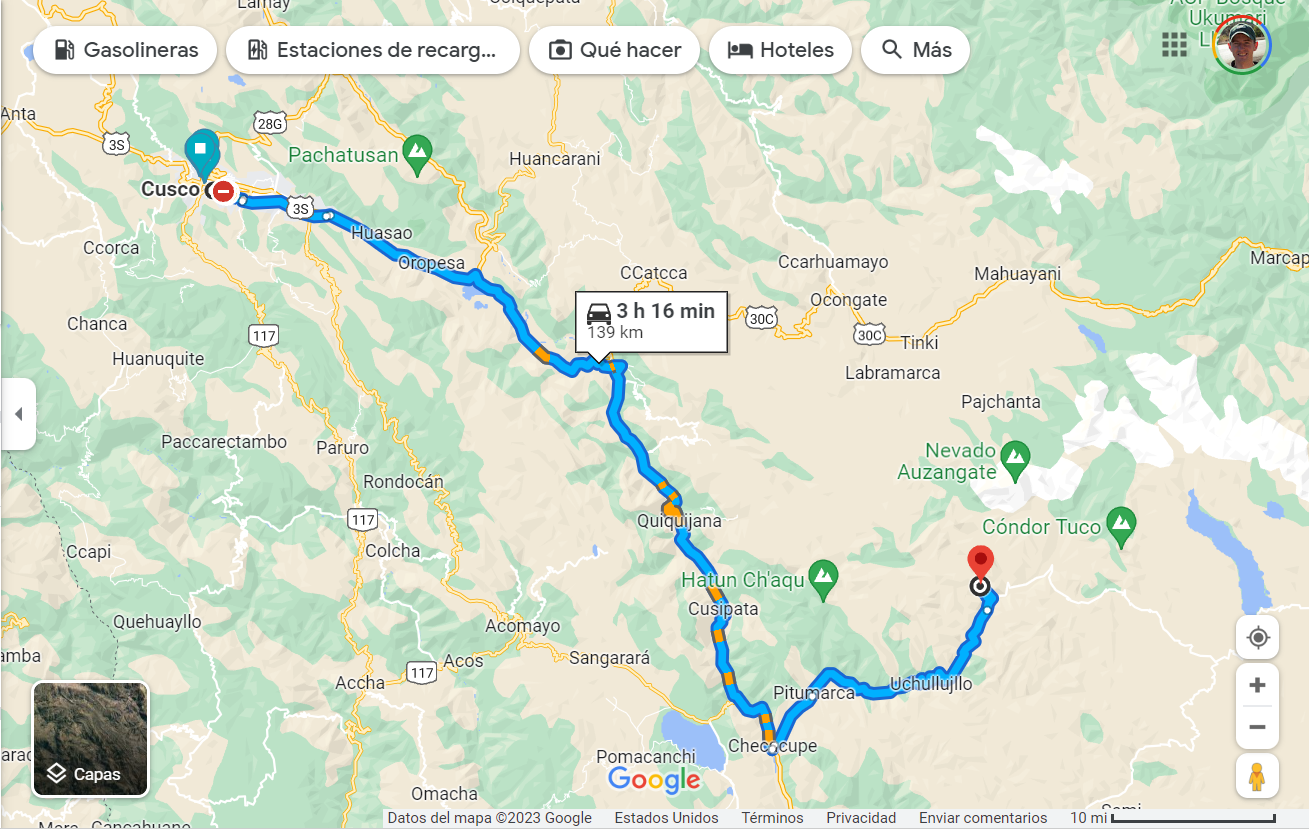
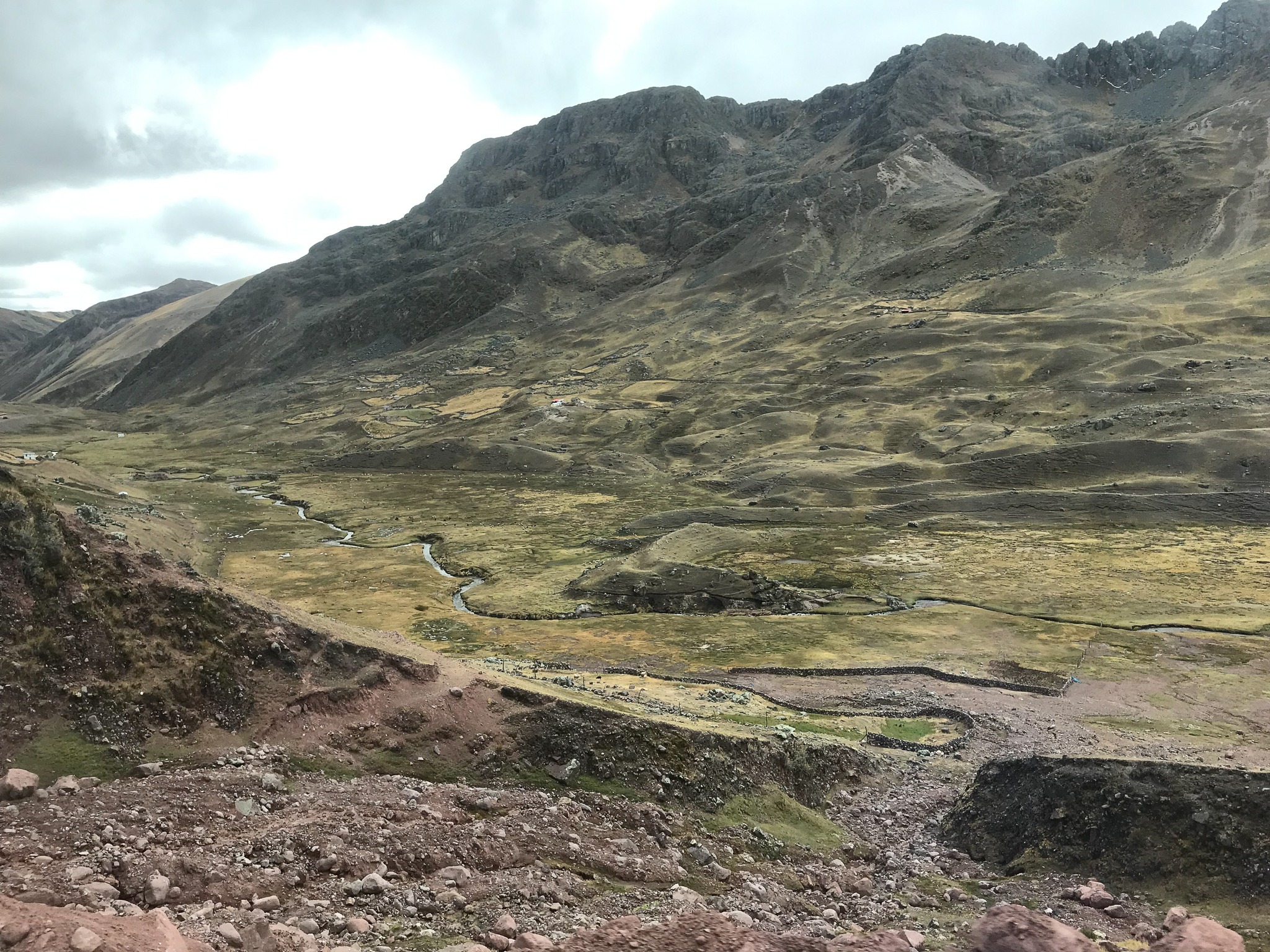
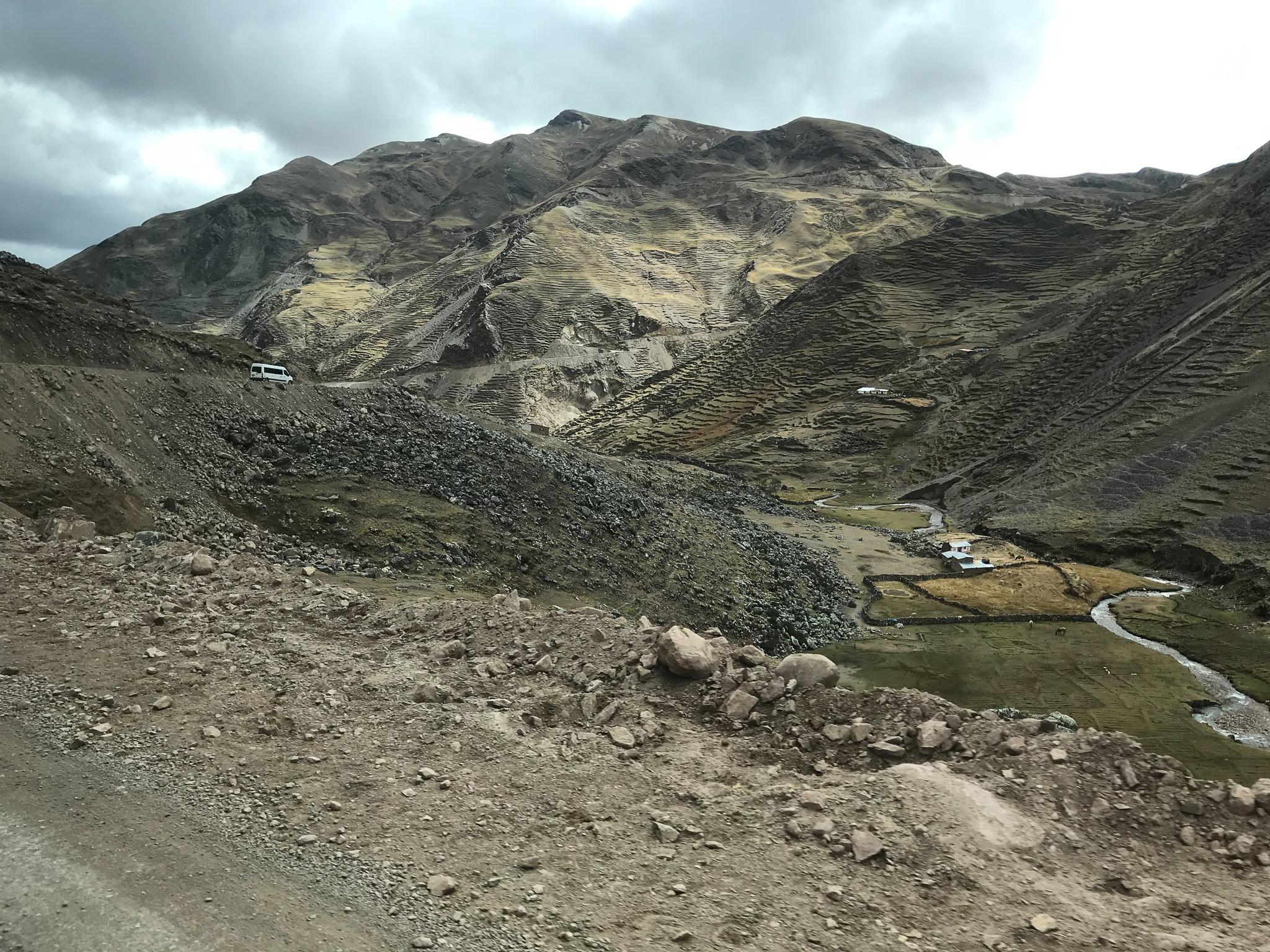
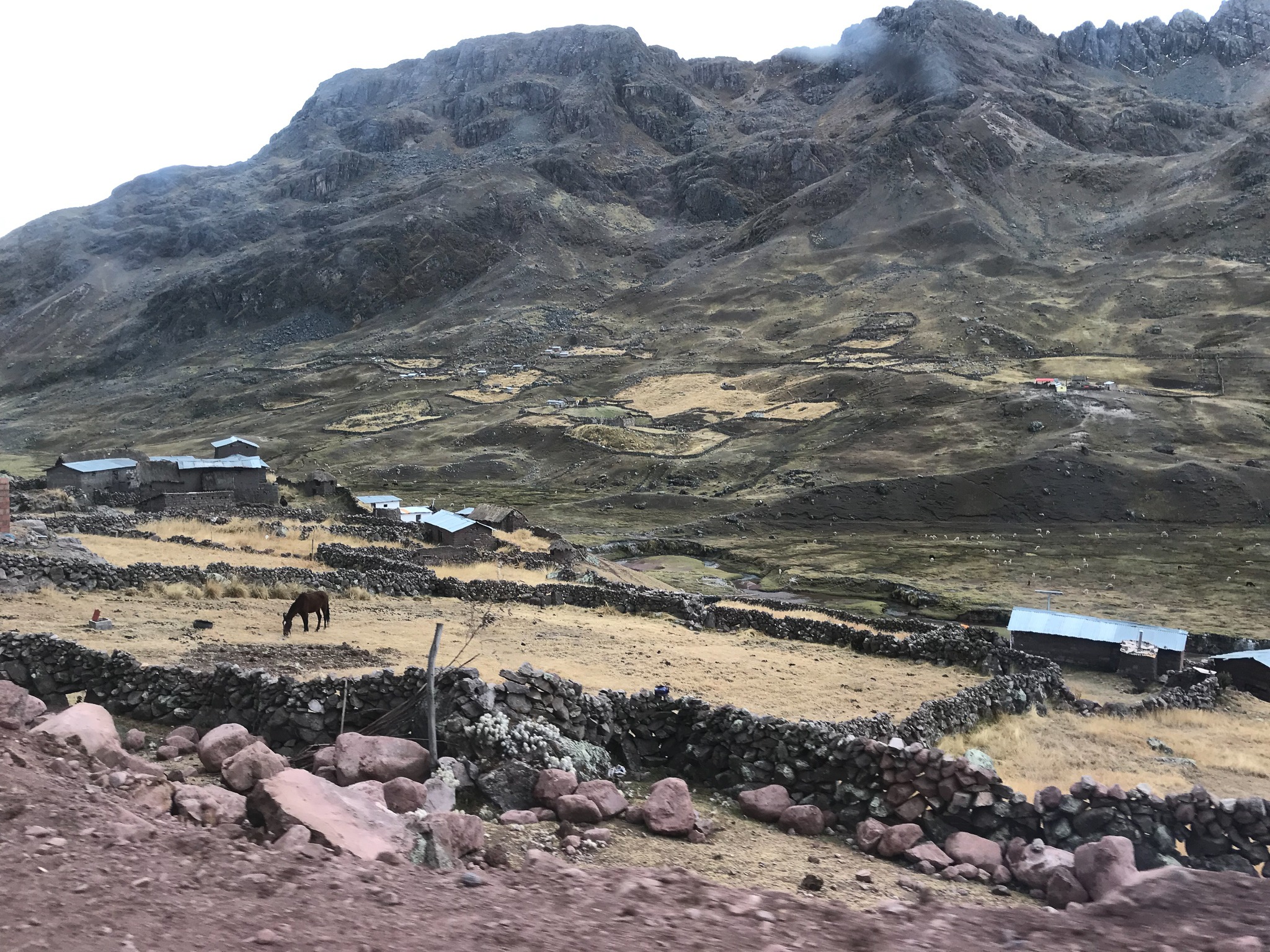
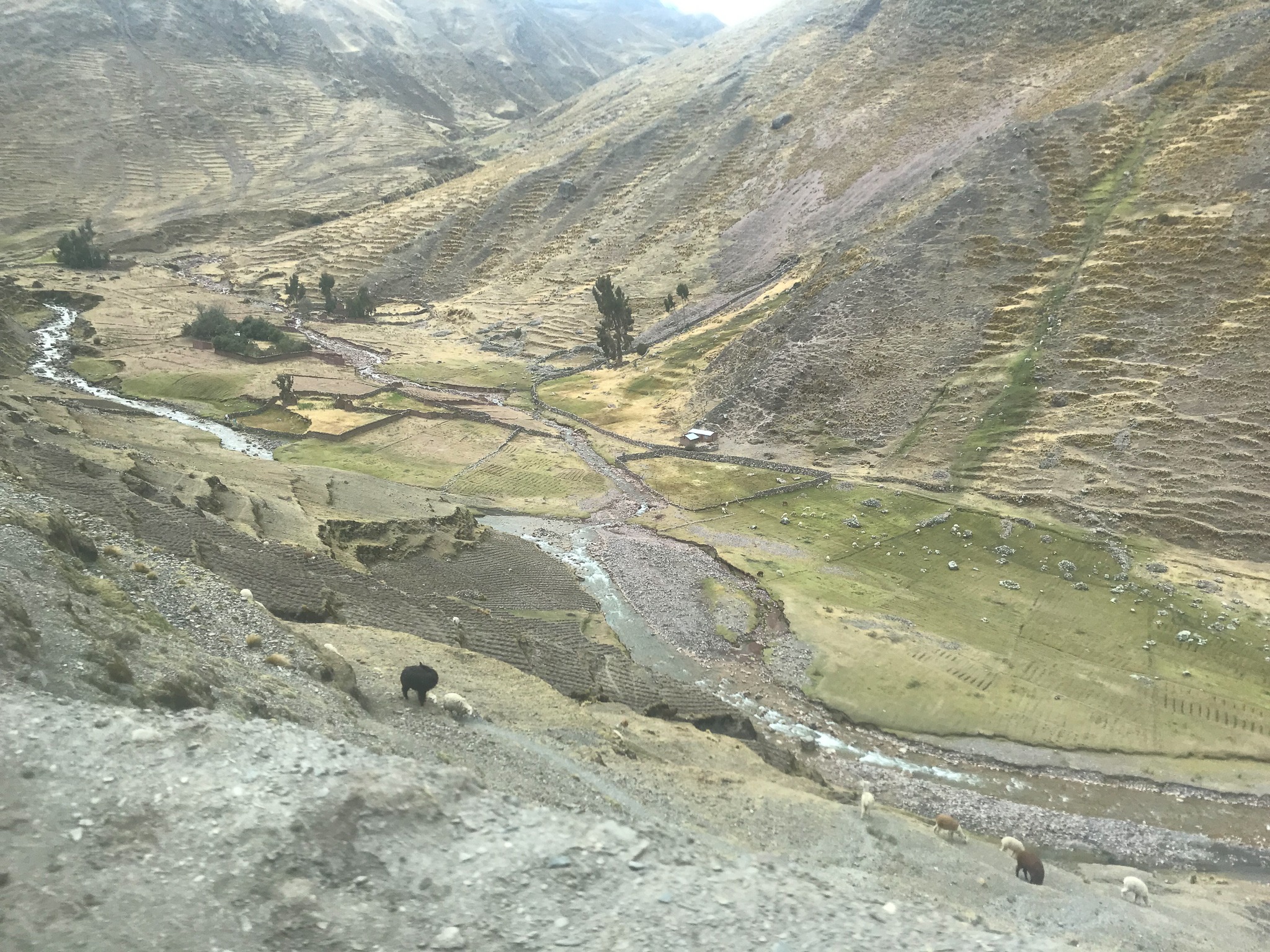
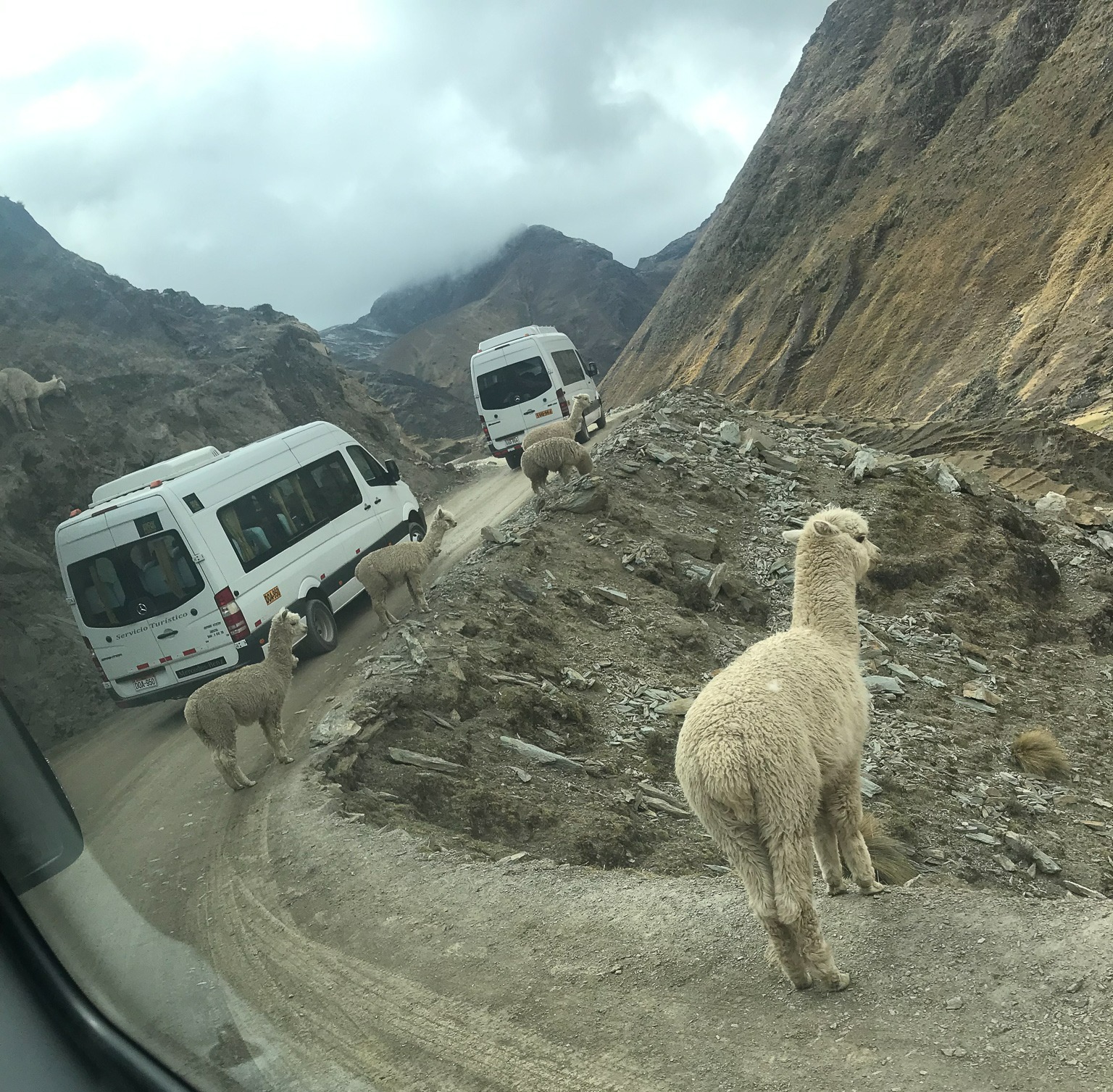
Base Camp at Vinicunca
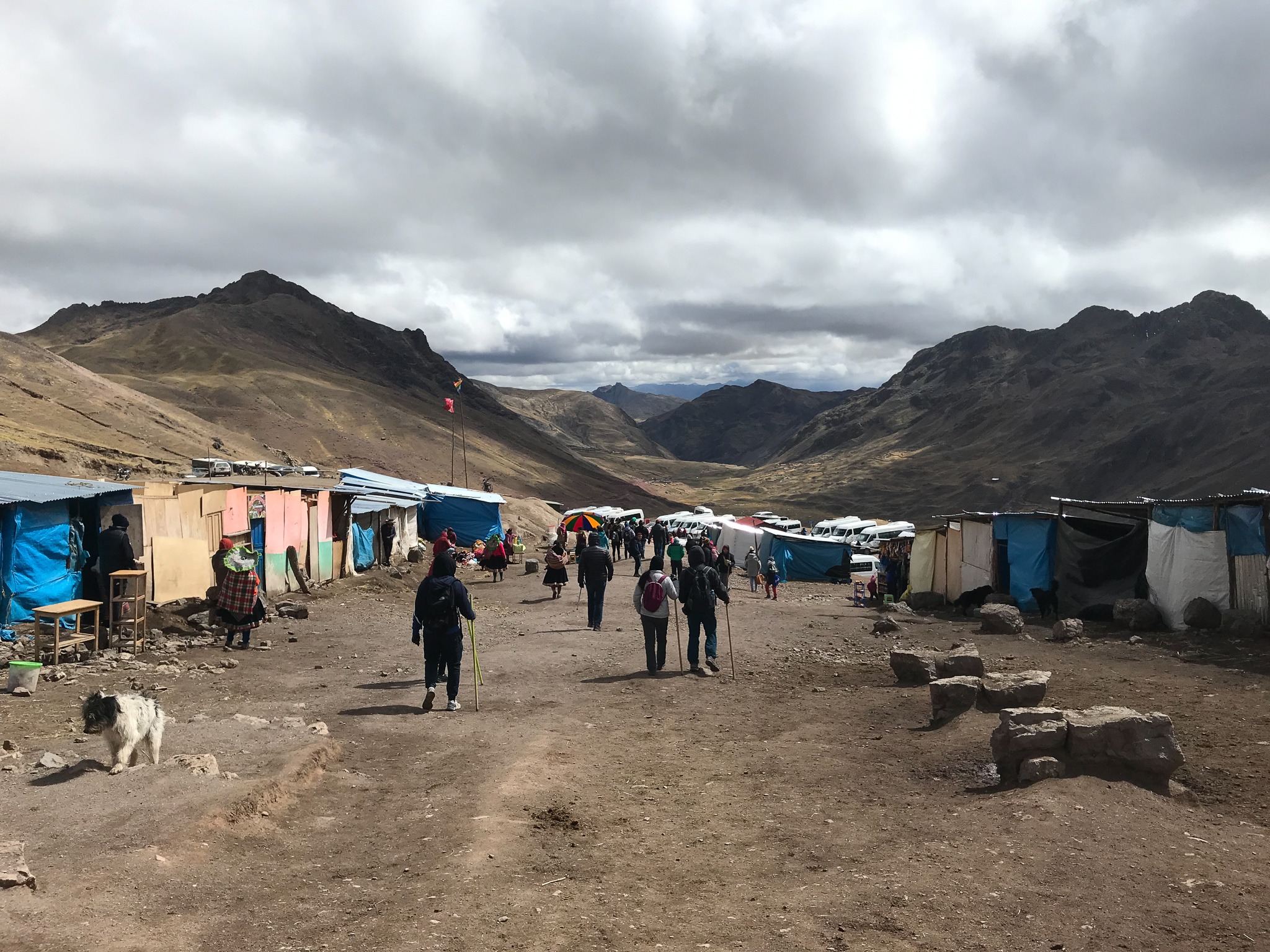
Hike to the Top
As we started hiking, we realized that the conditions might not allow us to see the Rainbow Mountain in its most colorful of states... We were in Peru in July (in the middle of winter) and it was especially cold, windy, and snowy on this day.
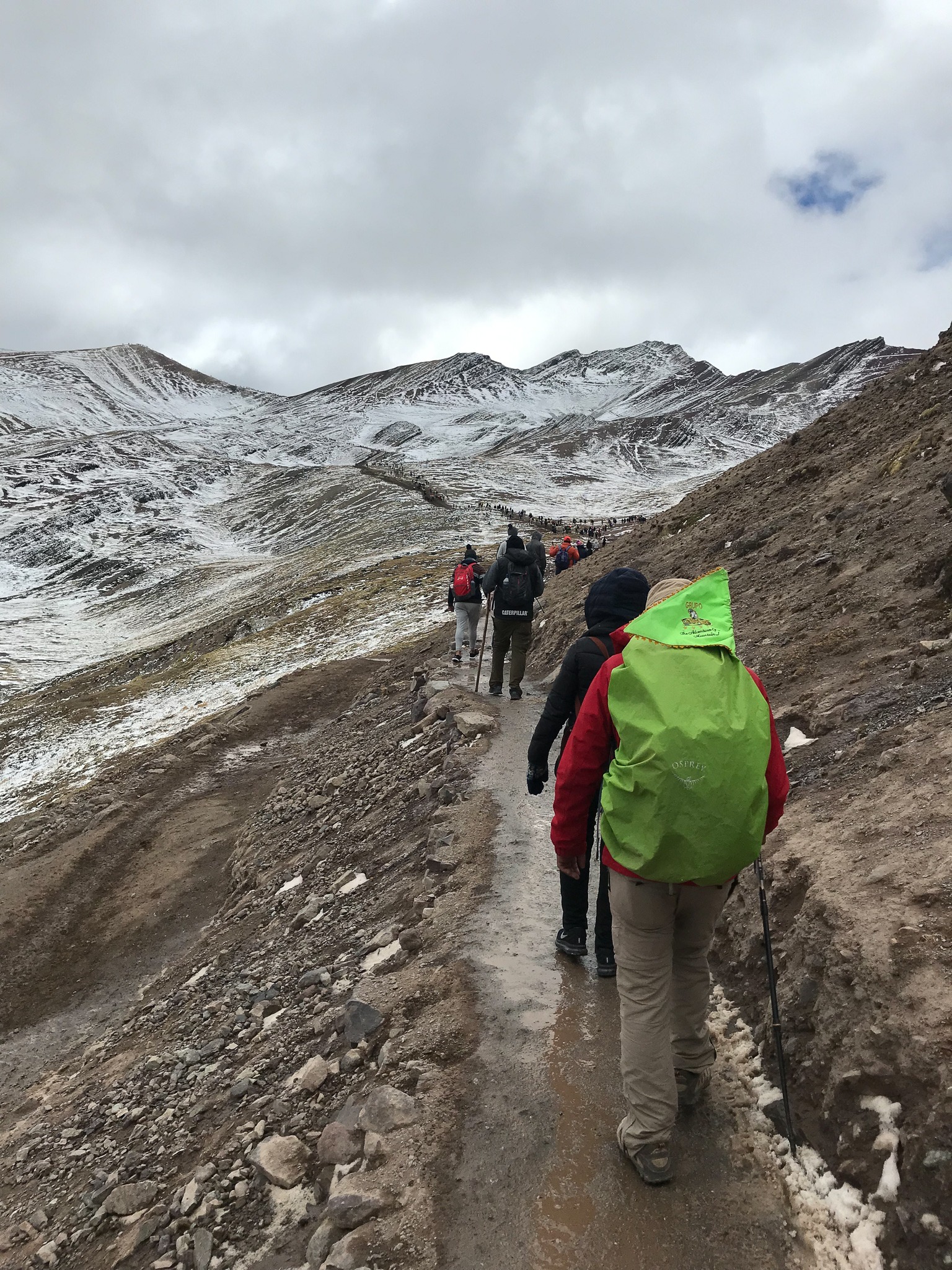
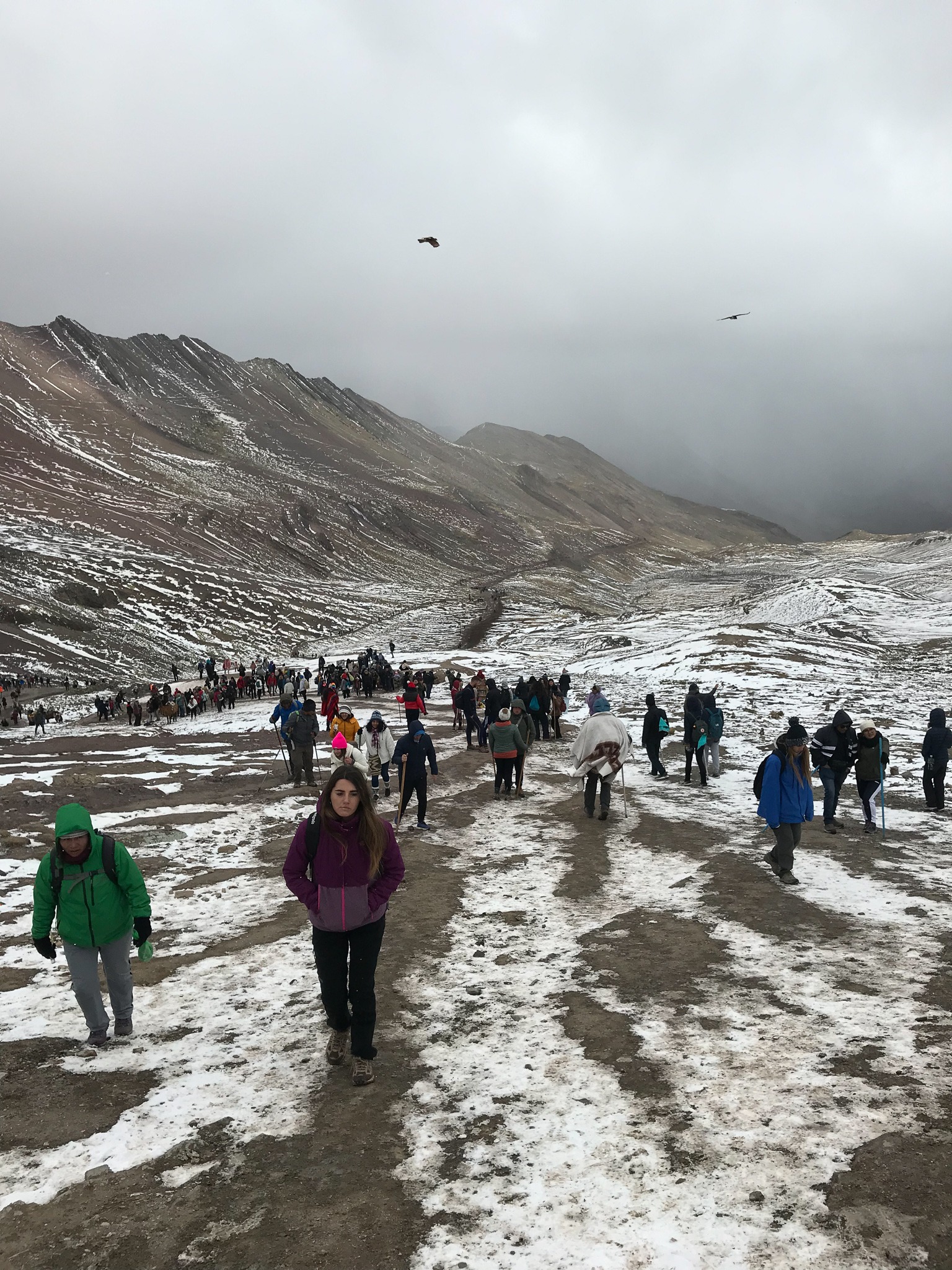

Vosotros in Peru
A guide led us to Vinicunca. An interesting linguistic thing happened on the trek to the to the top: The guide was addressing Juan and me as "vosotros," a way of saying "y'all" that is really only used in Spain and Equatorial Guinea, or by Spanish speakers from these two countries. The way of saying "y'all" throughout the rest of the Spanish-speaking world (basically, the Americas) is "ustedes." This was the second time on our trip that a local was addressing us as "vosotros." The taxi driver who took us from the Cusco airport to our hostel spoke to us the same way.
Juan suggested that in Peru there exists a bit of "admiration" for Spain and Spanish culture given Peru's history as a Viceroyalty of the Spanish Empire. During its reign between 1492 and 1976, the Spanish Empire had four viceroyalties--basically an administrative body that reported to and ruled over an area claimed by the Spanish Empire--in the Americas. They tended to establish these viceroyalties and their capitals where there was gold and silver. One of these viceroyalties was the Viceroyalty of Peru, which existed between 1535 and 1821 and had its capital in Lima and Cusco during this time. As a result, there are some unique ties culturally between Peru and Spain today.
I did some research, but couldn't find much documented online about the use of "vosotros" in Peru. But, there were definitely at least two instances where a local person was calling us "vosotros" and using verbs conjugated in the vosotros form as he spoke to us. The use of the vosotros form wasn't consistent throughout these conversations. The taxi driver and tour guide would intermittently refer to Juan and me as "ustedes" also, which suggests that the use of vosotros form was not natural and intentionally forced.
A good comparison that I can think of from my world is when an American (person from the U.S.A.) uses British colloquialisms when talking about soccer, like "football" instead of "soccer," or "pitch" instead of "field." Even though it may be unnatural for a person who has grown up in the United States to use such terms when talking about soccer/football, they may try to do so out of admiration for British football culture.
Vinicunca on a cold, winter's day
When we got to the top of an adjacent mountain from which we could see Vinicunca, we could only laugh at how violently cold it was--Rushing winds, freezing temperatures, and freezing rain. We chose a terrible day to visit the Rainbow Mountain, but it was better to try than not at all. In some of my pictures, you can kind of see the colored stripes of the mountain's surface.
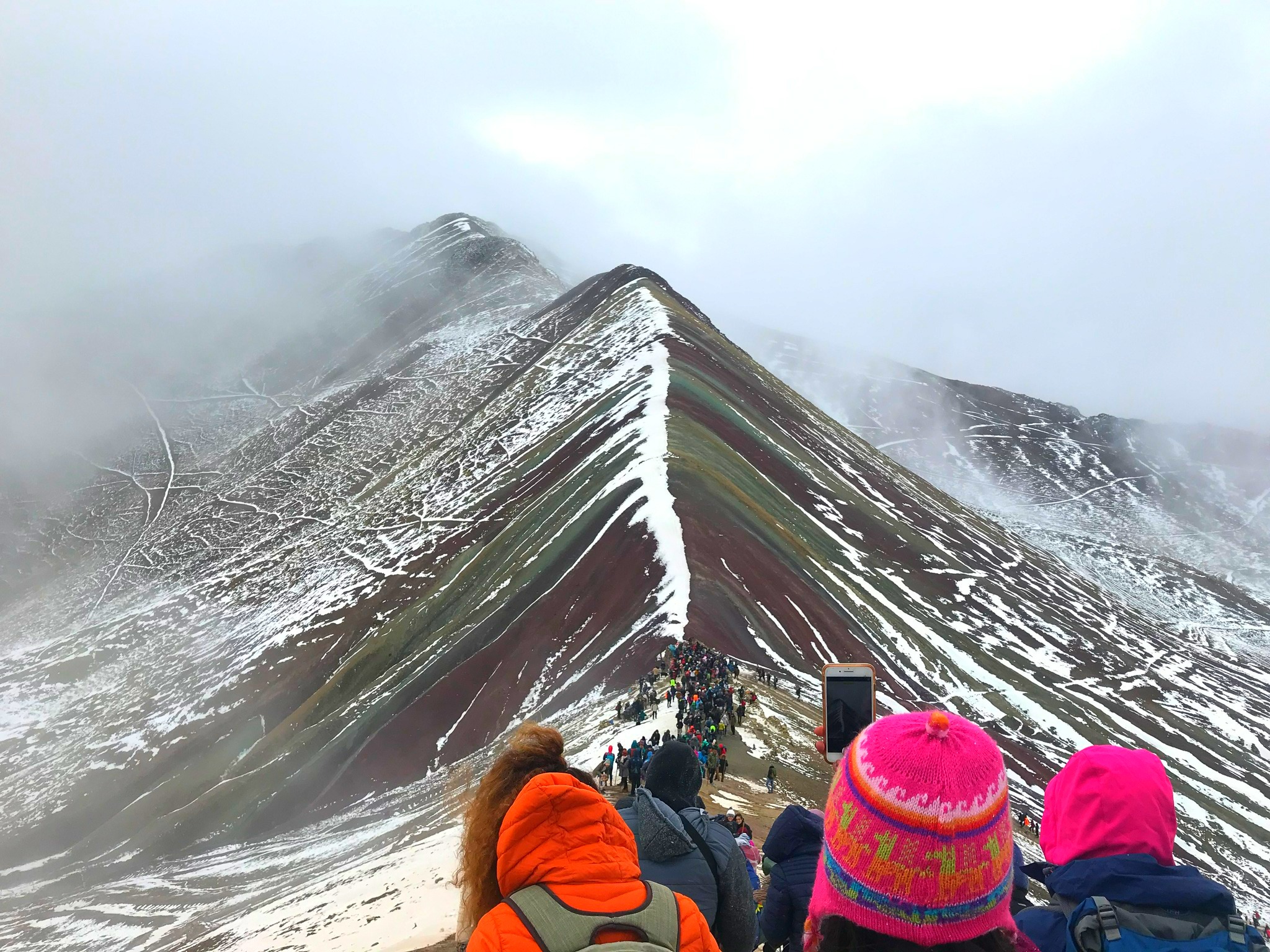


Life in the Valley
I tried to take some pictures on the ride back from Vinicunca to Cusco, although it was difficult because we were inside a moving bus.
At one point, we passed a soccer game. Despite a lack of photo quality, how cool this picture is of people playing on their makeshift pitch in the valley surrounded by mountains.
Also, often when we would pass through a village, I noticed children, who were probably walking to or from school given that they would have backpacks with them, would be wearing the same blue sombrero. It must have been a typical hat of this region. You can see the young boy in the second picture below wearing one.
Both of these pictures were taken in the outskirts of Cutipata, a district in the Quispicanchi Province of Peru, where the majority of inhabitants are indigenous citizens of Quechua descent and Quechua is the primary language.
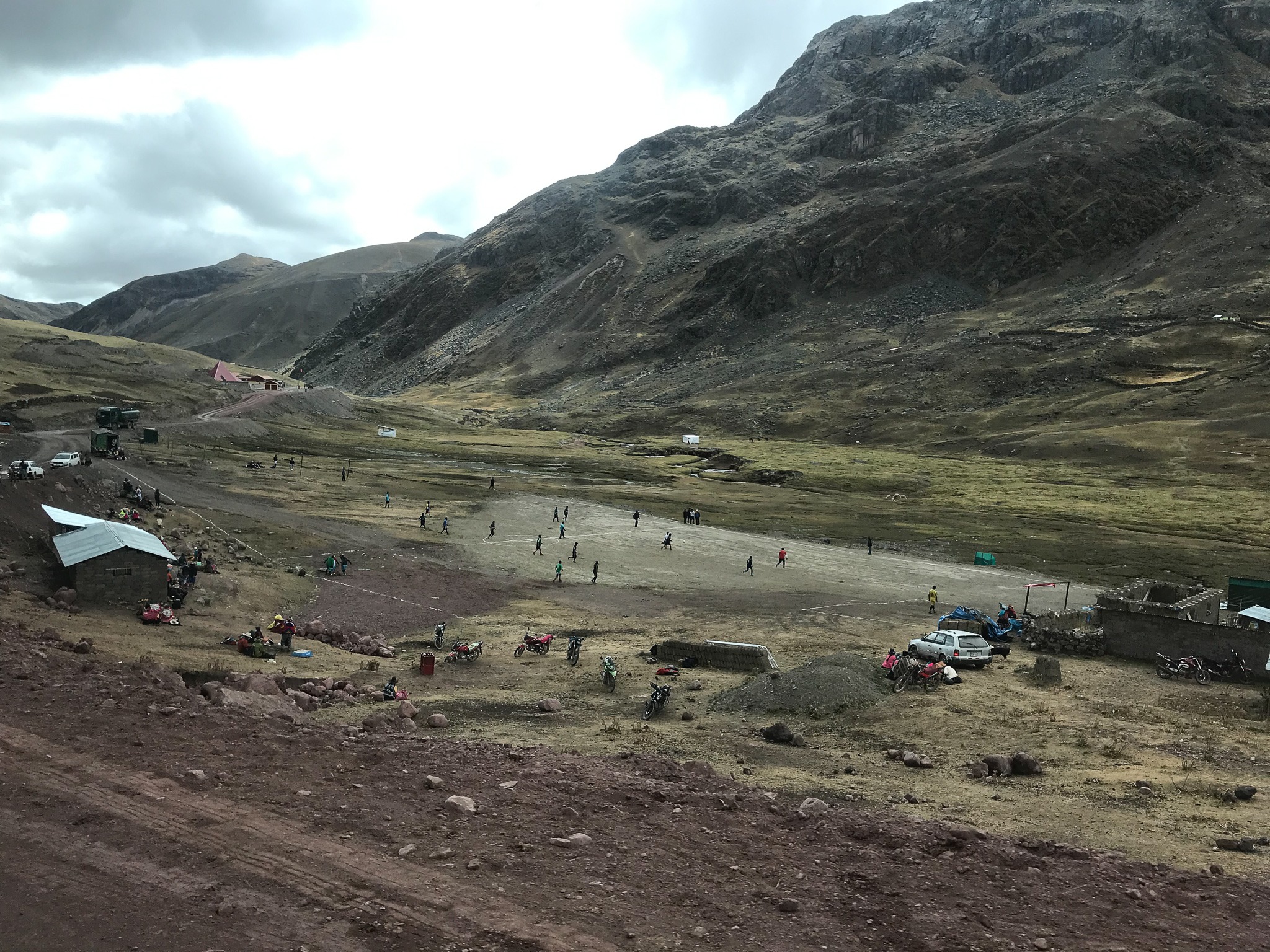
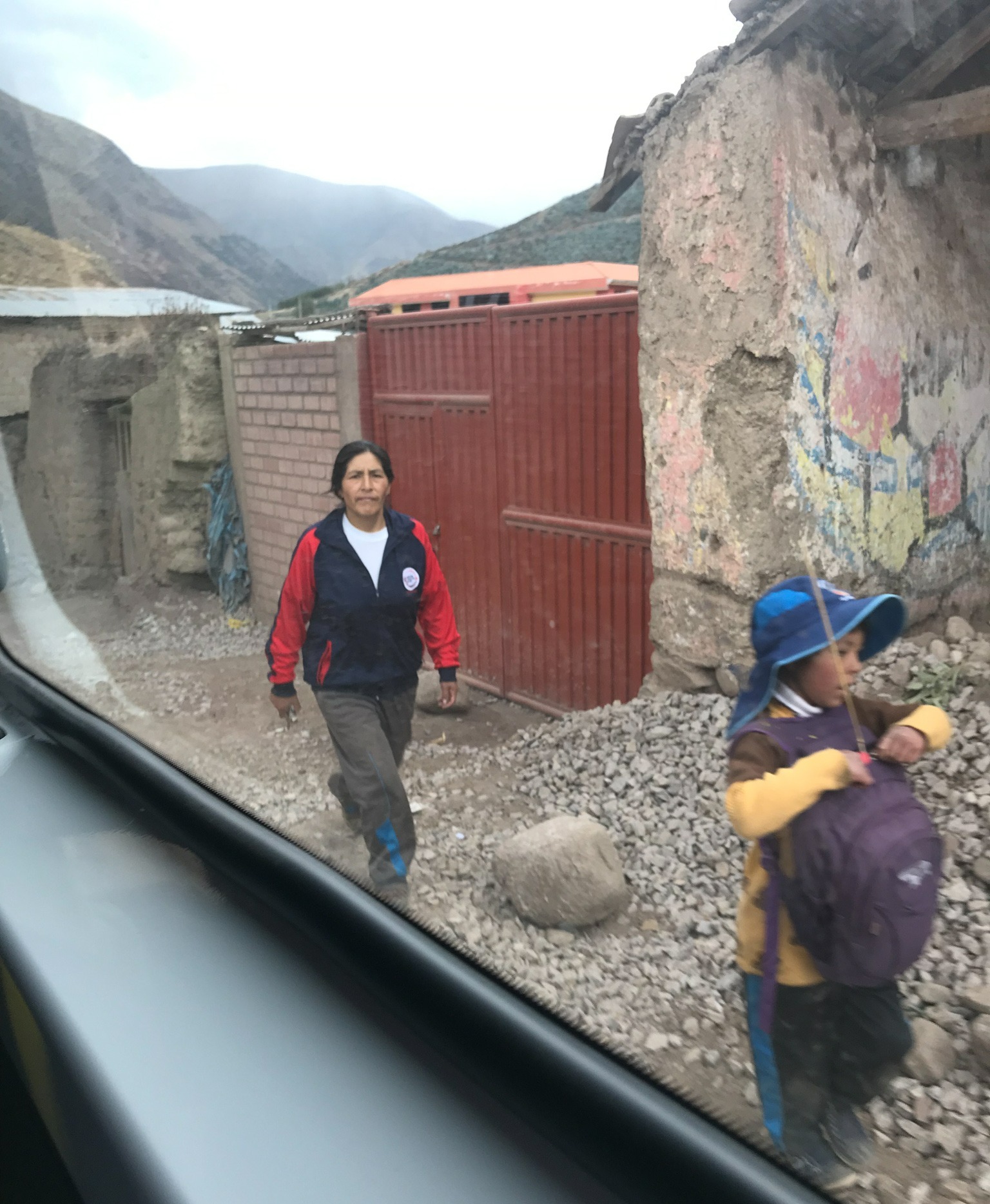
Dinner at Grimaldo's
Grimaldo's Polleria is a restaurant in the center of Cusco where the specialty is pollo a la brasa, or broasted chicken. After a long day of adventure, Juan and I decided that we needed a family size portion of chicken and french fries. Everyone in the restaurant turned, stared, and laughed as the waiter brought us our food, so we could only laugh back.
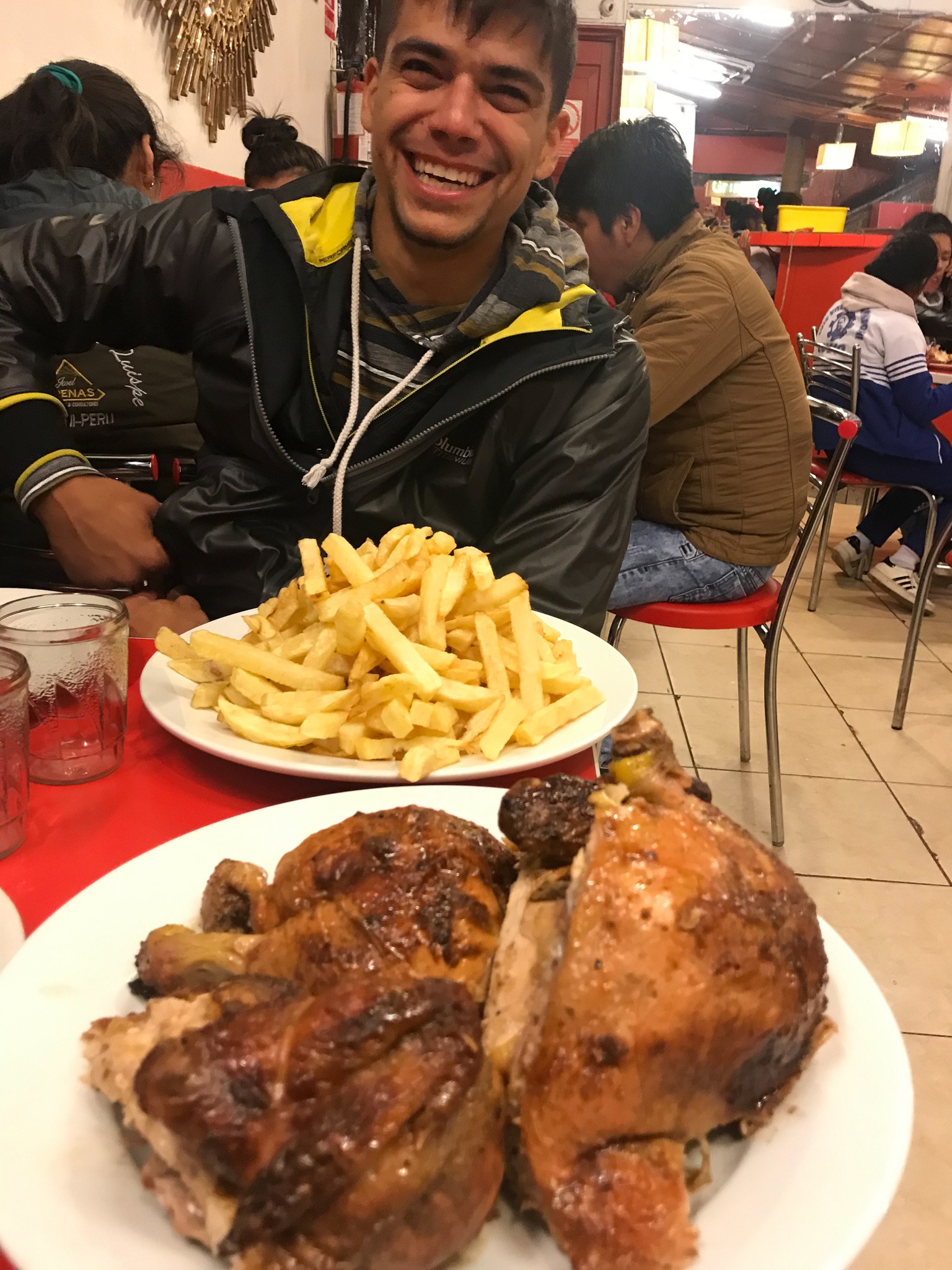
Post a comment